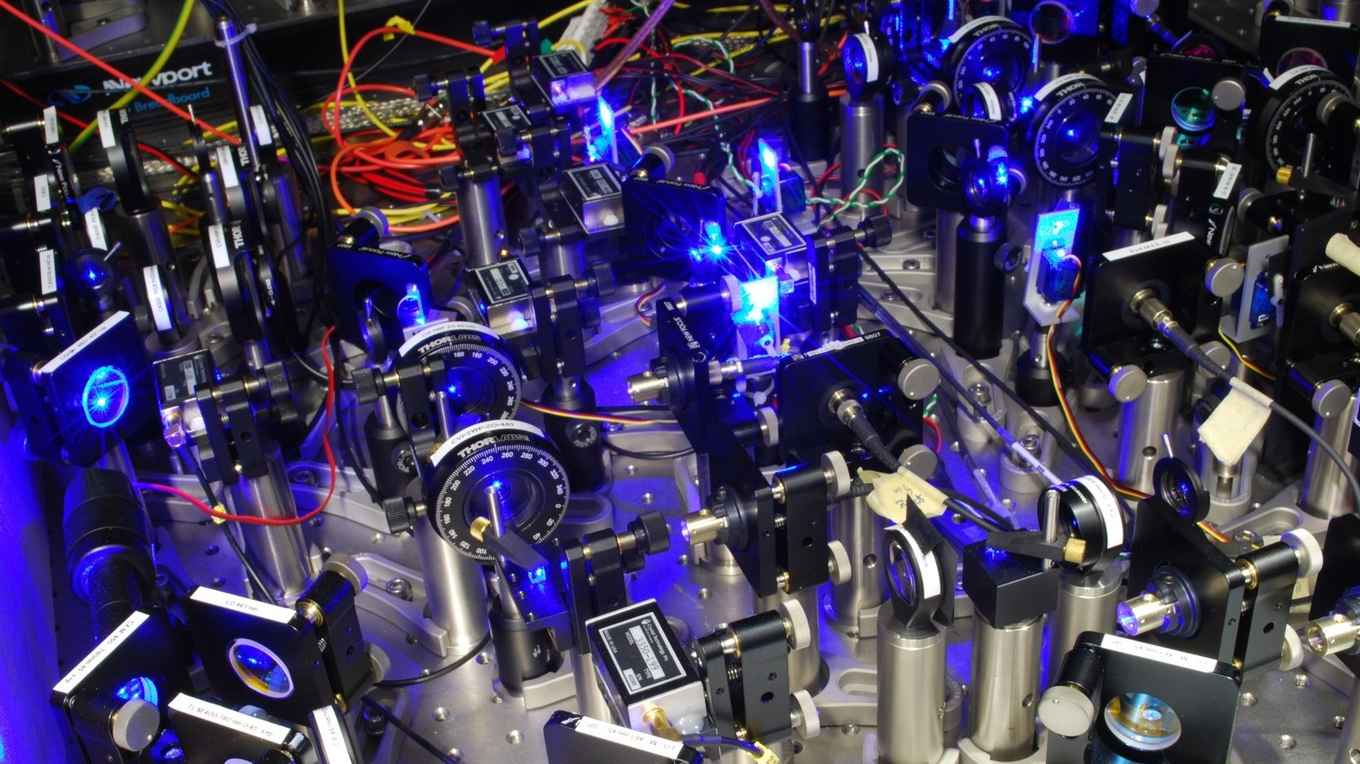Laser cooling for quantum gases
18 November 2021

Slowing down an atom or a molecule so that it becomes part of an extremely cold substance is not straightforward. One cannot simply grab individual moving particles and force them to hold still. In the 1970s and 1980s, techniques were developed that do enable one to cool atoms in vacuum: using carefully tuned beams of laser light, the motion of particles can gradually be eliminated. Using this idea of laser cooling, one can slow down atoms and molecules to form gases with temperatures close to the lowest possible one, about 273 degrees below zero on the Celsius scale.
Quantum gases
When gases get this cold, they become very ‘clean’, meaning that heat is only a very weak factor in the physical processes that go on. Instead, the laws of quantum mechanics dominate. In many gases, the atoms collectively settle down to their lowest energy state, a process known as Bose-Einstein condensation. Only with the advent of laser cooling has it become possible to create and study matter in pure realizations of this very special quantum state, where all particles behave the same.
Over the years, the continued development of laser-cooling methods has allowed more elements to be brought into states of quantum degeneracy, with each additional atomic species offering its own experimental opportunities. For instance, nowadays ultracold atoms are used for the very best atomic clocks that can keep time to within a second over the lifetime of the universe. Bose-Einstein condensates act as sources of coherent atoms and are promising for extremely precise sensing through atom interferometry, similar to how laser interferometry revolutionized optical sensing.
Special issue
At the same time, many avenues for further research and development remain. Presently, to reach a state of Bose-Einstein condensation, several techniques are applied consecutively. Moreover, once such a quantum degenerate state is reached, the extreme circumstances usually – quite literally – evaporate quickly, destroying the quantum gas. Improved methods make it possible to reach a Bose-Einstein condensate purely through laser cooling, while also making it possible to maintain this special state for as long as desired: continuous Bose-Einstein condensation.
With the topic of ultracold gases being such a hot topic in modern-day quantum physics and technology, leading physics journal Nature Physics decided to dedicate a special ‘Insight’ issue to the subject, titled ‘Ultracold quantum gas technologies’. UvA-physicists Florian Schreck and Klaasjan van Druten wrote a review article describing the current state of laser cooling for quantum gases and the challenges for and expected progress in the future.
Publication
Florian Schreck and Klaasjan van Druten, ‘Laser cooling for quantum gases’, Nature Physics. Doi: 10.1038/s41567-021-01379-w.